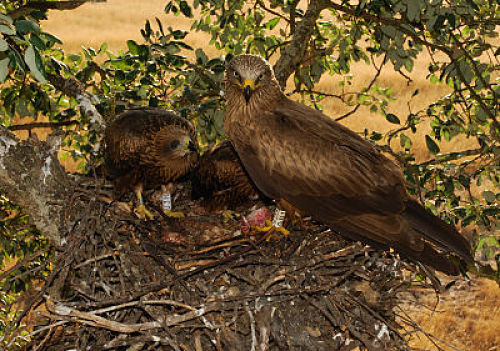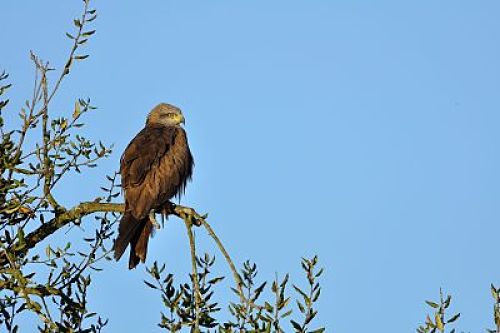Black Kite movement ecology (Spain)

Black kite
This project is lead by Fabrizio Sergio of CSIC- Consejo Superior de Investigaciones Cientificas (Spanish National Research Council). In collaboration with Julio Blas, Fernando Hiraldo, Lidia López Jimenez, Alessandro Tanferna, Javier Chicano. This project receives funding from Ministerio de Ciencia y Innovación (Spanish Ministry of Science and Education) Junta de Andalucía and Natural Research.
Doñana National Park, located in south-western Spain, holds a very dense population of migratory black kites Milvus migrans (more than 500 breeding pairs every year), a population that has been intensively studied since the 1980s. Past studies have focused on very detailed examination of particular aspects of the behavioural ecology of the species, with much attention being given to the determinants of dispersal, of nestlings’ growth rates, hatching asynchrony and brood reduction.
As a result of much ringing of nestlings and trapping of adults, a large portion of the individuals is currently marked, which yields important information employed in elaborate demographic analyses. However, despite much marking, little is known about the migration routes, distribution and spatial behaviour of the individuals during their 6-7 months long annual stay on their African wintering quarters. Educated guesses are that black kites are nomadic during winter, but this has never been properly tested. Also, some European populations of the species are declining and the causes of such declines are usually unknown, which makes it important to delineate the wintering areas in order to identify or rule out potential “African threats” as factors contributing to the declines.
For this reason, a satellite-tagging project has been started with the objective of investigating the migration-routes and spatial ecology of the Doñana population in its African quarters.
In the spring-summer of 2010, 10 satellite-tags funded by Natural Research were placed on adults and nestlings in Doñana National Park. By 2013, four of these tags were still functioning and have rendered extremely precious information on the migratory and wintering behaviour of these individuals during four consecutive years. The information provided by these tags is integrated within a wider conventional and GPS-satellite telemetry study, started in 2007 and still ongoing, that is starting to produce its first publications. Reassuringly, the overall survival of the marked kites is consistent with the survival of > 4000 individuals assessed through less invasive methods (i.e. ringing), implying no major adverse effect of the satellite-tags on the marked birds. Overall, the data collected so far confirmed the nomadic behaviour of the species in its Sahel quarters. Most individuals ranged widely in this period, using several nations in succession, with daily home ranges in one week often farther than 500 km from the daily home ranges of the previous week. Collectively, the marked kites have used a total of 10 countries, including Mauritania, Mali, Senegal, Gambia, Guinea, Ivory Coast, Burkina Faso, Ghana, Togo and Benin.
Natural Research would like to offer our congratulations to Fabrizio Sergio, Julio Blas, Fernando Hiraldo, Lidia Lopez Jimenez, Alessandro Tanferna and Javier Chicano on being awarded the Watson Raptor Science Award 2012 for their paper entitled "Raptor nest decorations are a reliable threat against conspecifics". The paper has also been published in Science (2011) 331; 327-330. The paper is a product of a project partly funded by NR into Black Kite (Milvus migrans) ecology in Spain.
Raptor nest decorations are a reliable threat against conspecifics. Science (2011), 331: 327-330.
This award recognises the most outstanding, peer-reviewed scientific publication on raptor ecology, based on research undertaken in Europe. It has been established in the name of the late Donald and Jeff Watson, whose work on raptors (particularly hen harriers and golden eagles in Scotland) is well-known, and forms part of a unique initiative to establish the Watson Bird Centre and Dalry, Scotland as a bird town.
The latest publication from this project. http://www.nature.com/nature/journal/vaop/ncurrent/full/nature13696.html



